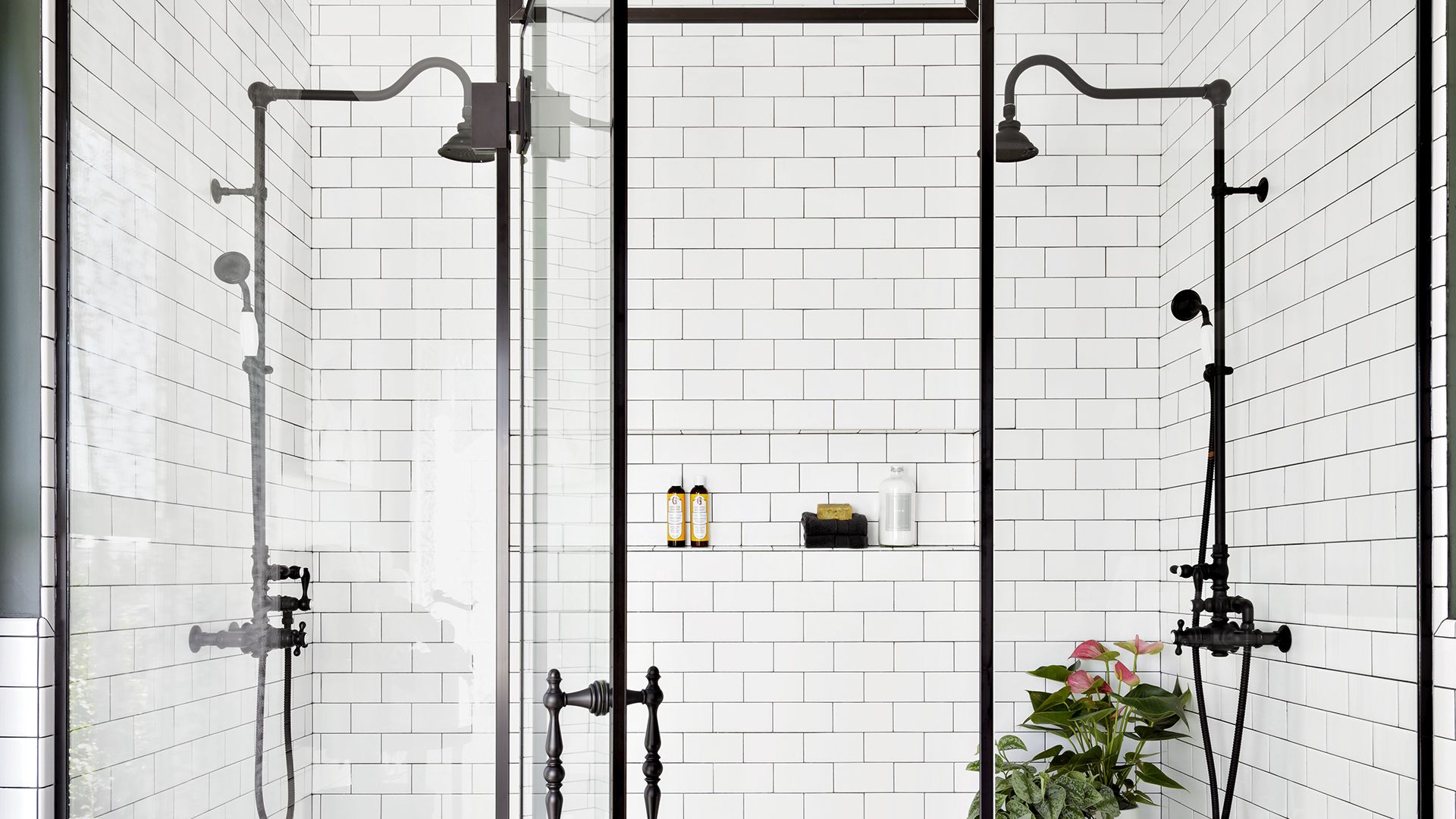We may be compensated if you purchase through links on our website. Our team is committed to delivering honest, objective, and independent reviews on home products and services.
Invented as a way to wash off fast, showers have evolved into a prized source of relaxation, often with spa-like amenities. Steam shower with colored lights and piped-in playlists, anyone?
No wonder showers account for 17 percent of a typical household’s water bill, according to the EPA. That’s led to a new generation of showerheads designed to put less water to better use. Thermostatic valves have done away with the shock of temperature swings, exposed shower risers have turned into design statements, and panels of frameless glass show off artfully tiled walls and invite in natural light.
If you’re redoing your shower, there are several things you might want to upgrade. Add built-in niches for essentials, a handheld shower, or a built-in bench, if there’s room. If you’re craving something more elegant, consider body sprays set in the walls, a steam shower setup, and radiant floor heat to take the chill off all that tile. In this guide, we’ll walk you through everything you need to know before redoing your shower.
How Much Does a Shower Remodel Cost?
Bathroom renovations, particularly shower remodels, can be significant investments. The cost varies widely depending on the scope of work, materials chosen, and your location. On average, a shower remodel can range anywhere from $200 to $15,000, with an average of $8,000, according to Angi.
“As with any renovation, an experienced GC [general contractor] can help you decide where to spend and where to save,” says architect Jerry Allan of Afton, MN. Allan adds that clients often come to him with online inspiration photos, unaware of the complexities involved in achieving their desired look.
Even if you’re simply rebuilding your existing shower with better waterproofing and updated finishes, you should first understand best practices and product choices.
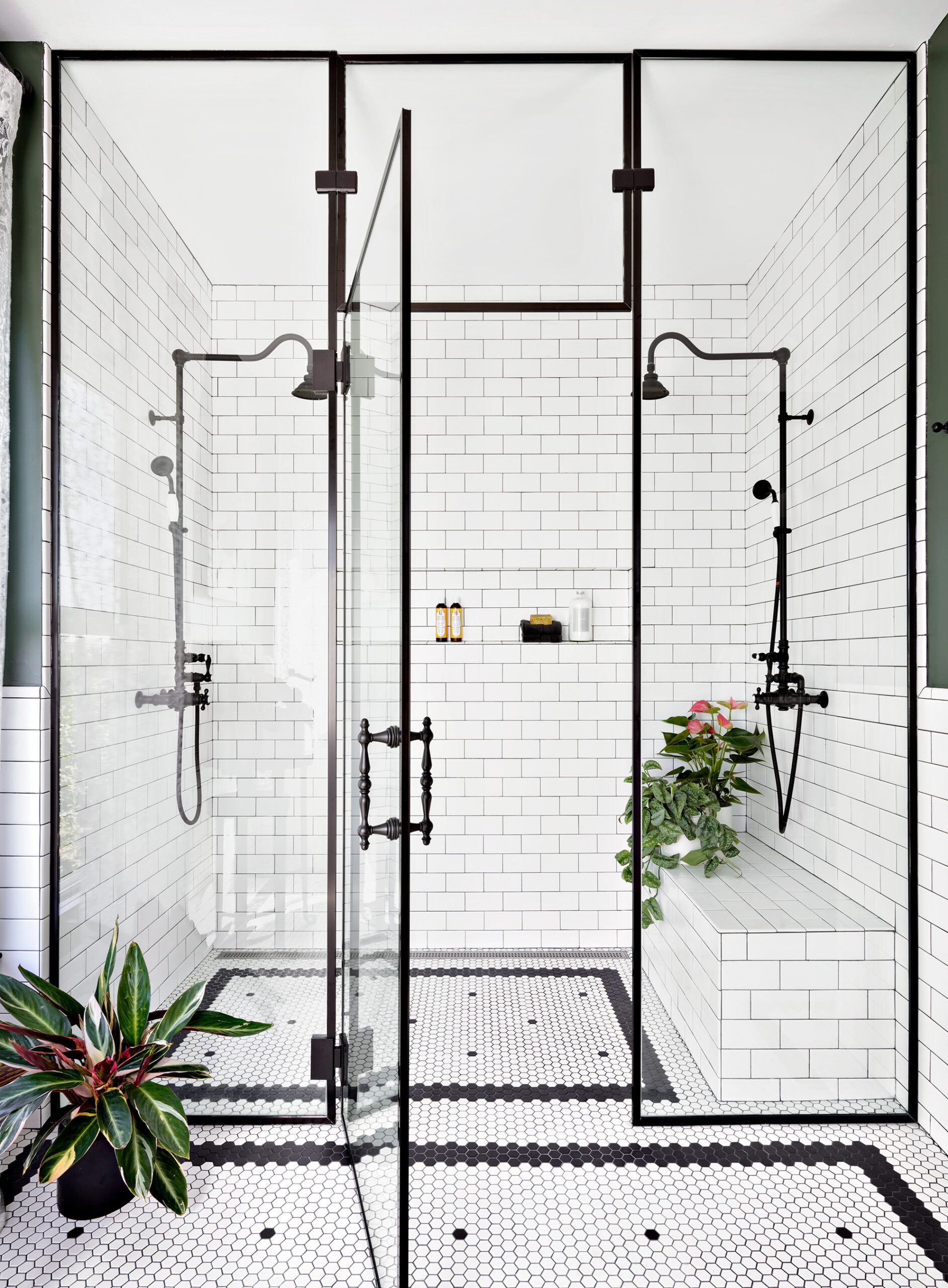
Designer: Michelle Dirkse. Shower fittings: Signature Hardware. Photo by Aaron Leitz.
How Big Should Your Shower Be?
When determining the size of your new shower, consider both your available space and personal preferences. A standard tub alcove, typically three by five feet, can be converted into a spacious shower. Even a three-foot-square space can work well for a shower enclosure.
South Carolina designer Sandra Gaylord advises that you don’t need to go wider than 42 inches. For those considering a shower for two, a minimum length of 60 inches may accommodate dual showerheads.
Gaylord recommends placing mixer controls toward the room side of the shower or on the wall opposite the showerhead when possible. This arrangement allows for turning on the water without getting soaked and enhances the overall aesthetic.
Determine Your Drain Location
The location of your shower drain can significantly impact the cost and complexity of your remodel. Keeping the drain in its existing position can save money, especially if you’re maintaining the shower’s current size and shape. For standard-sized showers, consider a prefabricated shower pan with a built-in slope towards the drain for efficient water drainage.
If you need to replace the drain, expect to pay between $500 and $1,020, according to Angi. New drain systems allow for relocating the drain up to three feet away from the existing pipe, offering more flexibility in shower design.
When planning your shower layout, consider the placement of additional features such as:
- Shower valve and showerhead height
- Body sprays
- Built-in niches for toiletries
- Grab bars for safety and convenience
- A bench, if space allows
- Steam unit components, if desired
Two Ways To Waterproof Your Shower
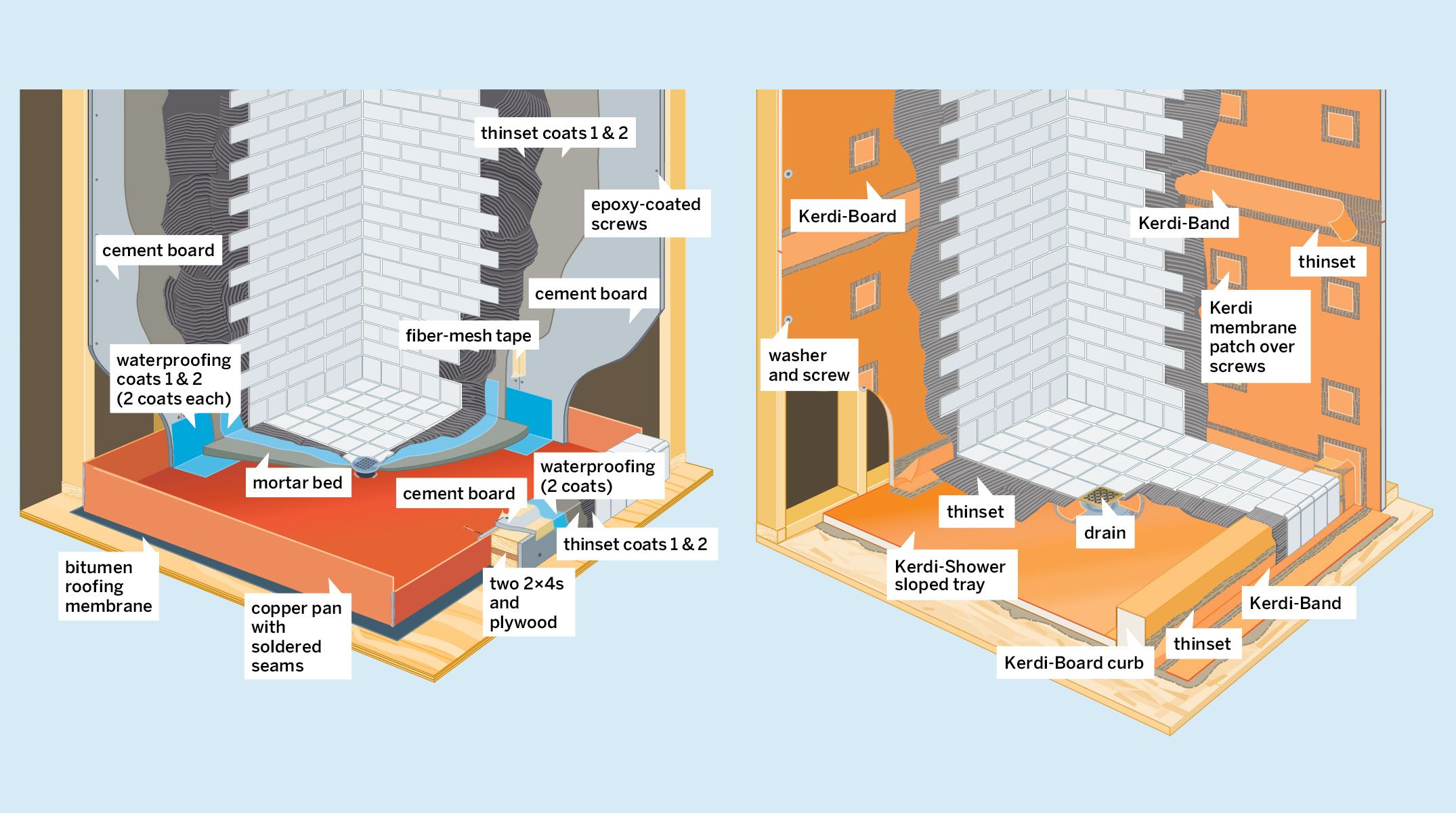
Proper waterproofing will protect the wall and other components behind the shower. Here are two This Old House-approved methods:
Mortar bed and membrane
This traditional method involves:
- Installing a custom-soldered copper pan
- Packing it with a thick mortar bed
- Applying two coats of a two-part liquid waterproofing membrane
- Skim-coating the walls with thinset twice
While time-consuming, taking about three days with drying time, this method has proven reliable and is the favorite of experienced tilers like Mark Ferrante and his son and partner Erik, who have tiled showers for Silva Brothers for 30 years and have “never had one leak.”
Prefab foam components
For a faster installation, consider using lightweight prefabricated components like the Kerdi-Board system from Schluter. This method offers:
- Foam wall and floor panels with a pre-applied waterproof membrane
- Quick installation time (about 6 hours for a 36-by-36-inch stall)
- Immediate readiness for tiling
This method is preferred by tiling pro Alex Perez, who works with This Old House home builder Jeff Sweenor, who is glad his days of lugging heavy cement board and waiting for plumbers to install pans and drains are behind him.
Shower Drains
It’s easier to tile up to the straight edges of a square drain cover than to nibble tiles to fit around circular ones. Trough-style linear drains only require the shower floor to slope in one direction and are most often placed along the shower’s back wall. Some linear drain covers accept tile. Others, known as wall drains, are located behind a narrow gap at the base of the back wall.
Types of Shower Doors
Frameless glass shower doors have become increasingly popular, offering a sleek and modern look. However, there are several styles to consider:
Open and shut
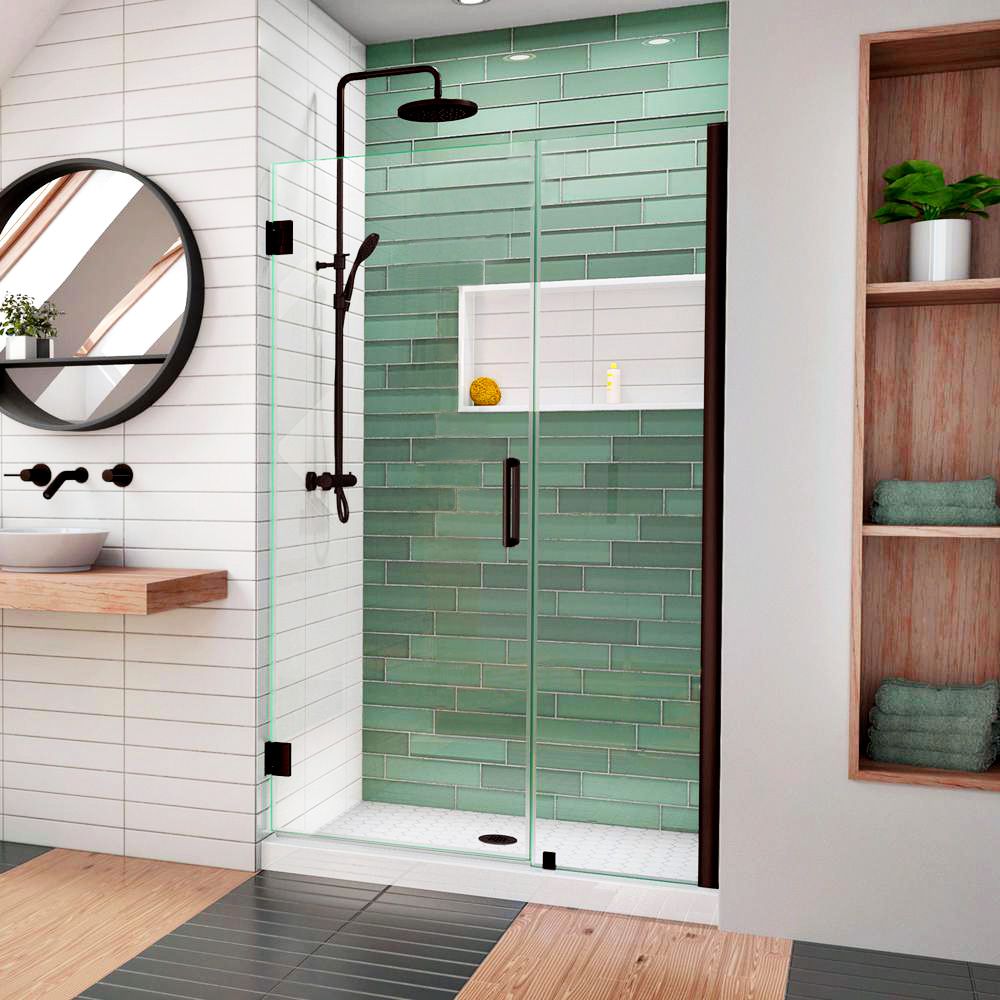
Frameless glass panels create an airy feel and can be adjusted to swing into the shower, allowing wet doors to drip inside the enclosure.
Shown: Dreamline Unidoor Frameless Hinged Shower Door in Oil-Rubbed Bronze, Kitchen & Bath Authority
Spray screen
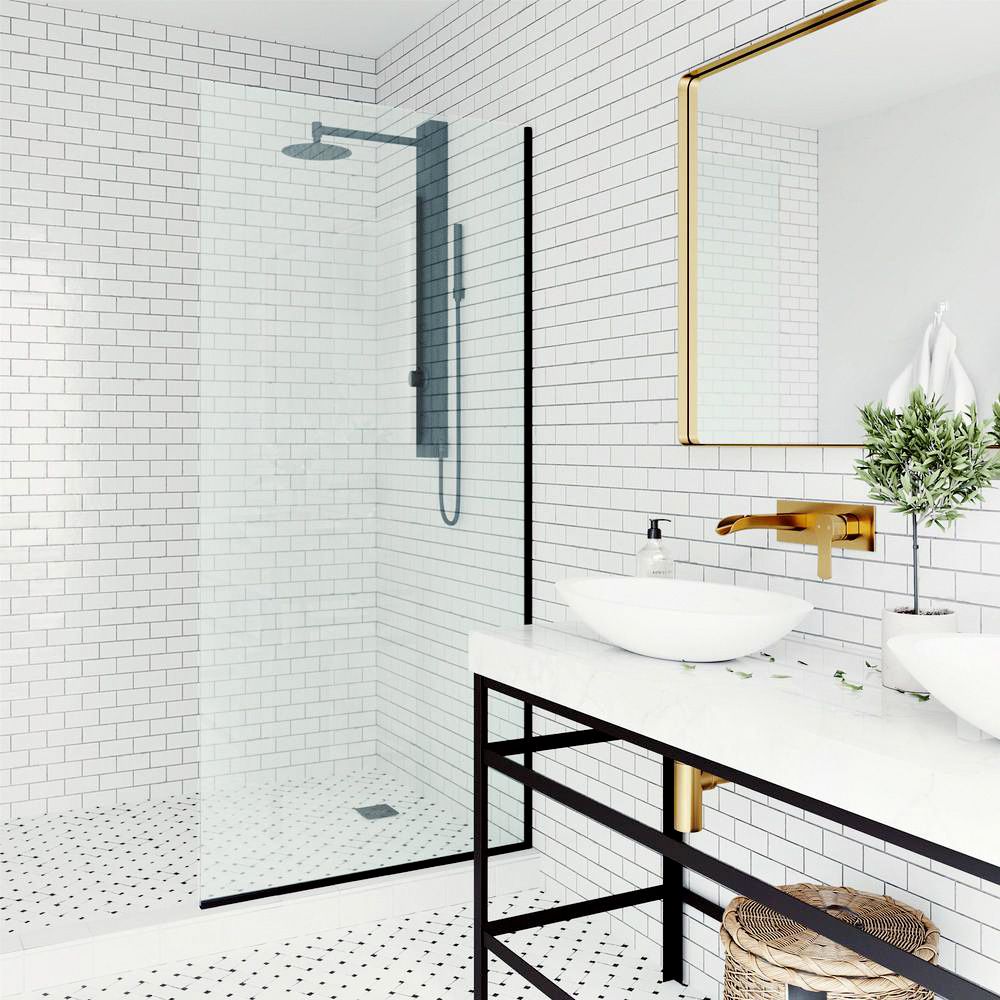
A hinged or stationary panel can serve as a splash guard in tight spaces, ideal for careful bathers.
Space-saving bifold
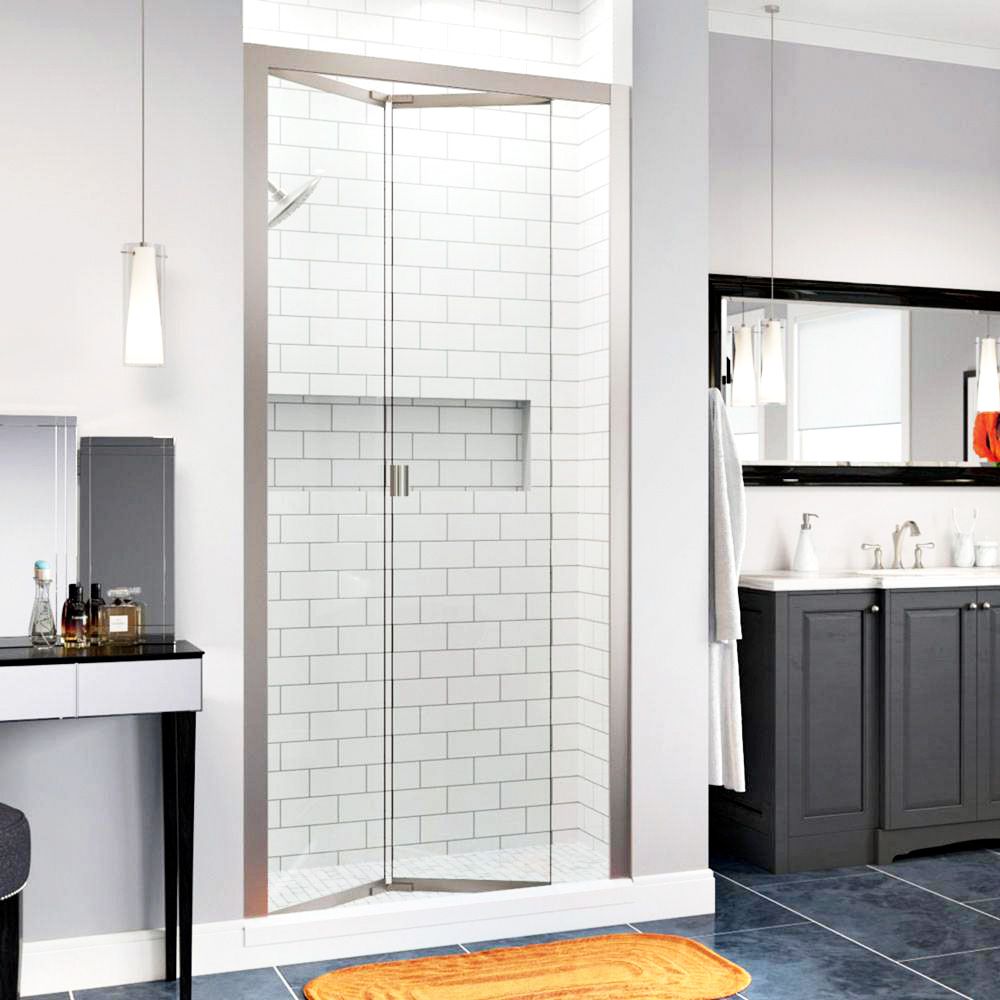
Folding doors are an excellent solution when there’s limited room for a fixed panel or door swing.
Shown: Basco Infinity Semi-Frameless Bifold Shower Door, Wayfair
Barn-door style
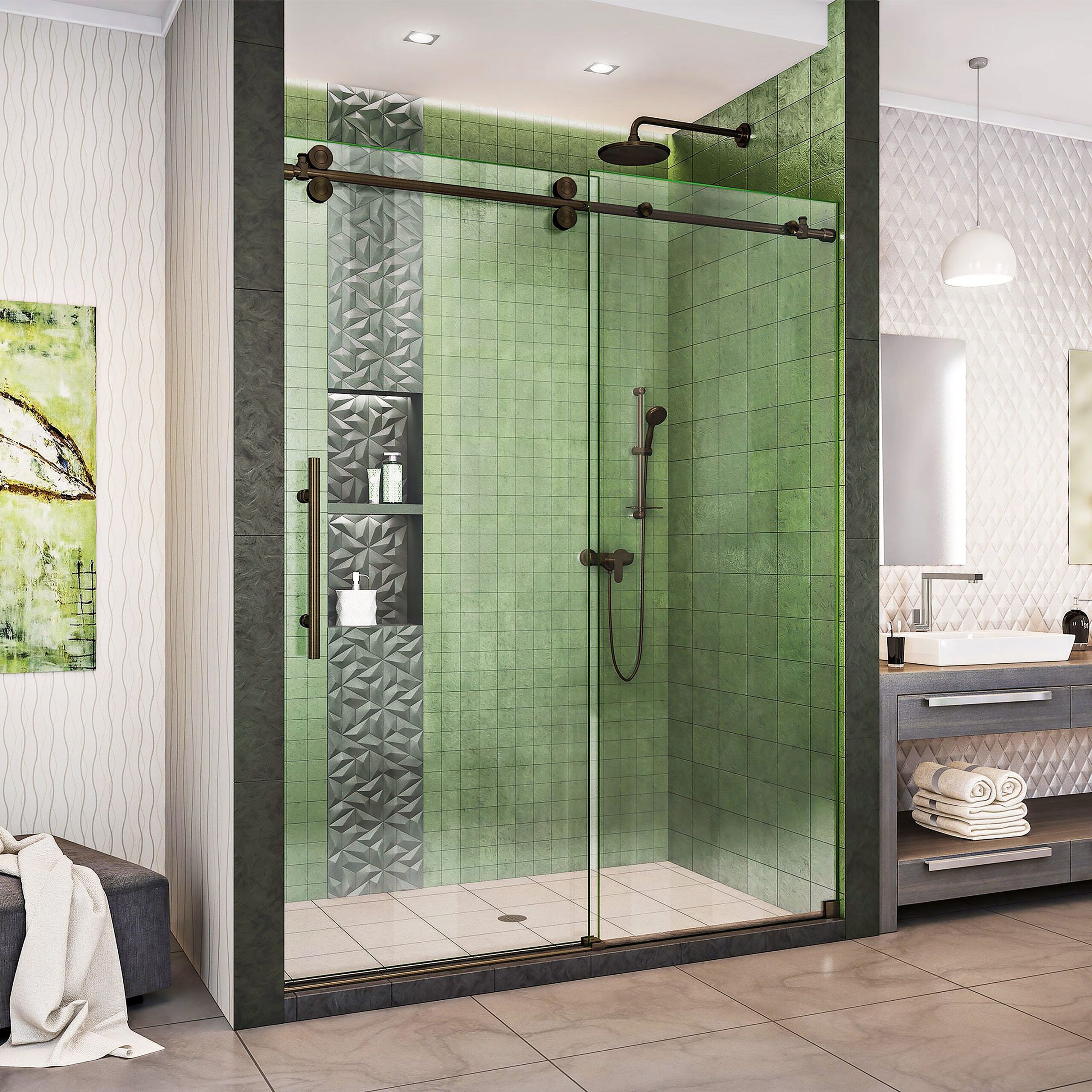
Sliding doors on a track eliminate the need for a space-consuming swing, offering a stylish and functional option.
Shown: Dreamline Enigma XO Fully Frameless Shower Door in Oil-Rubbed Bronze, Lowe’s
Windowpaned
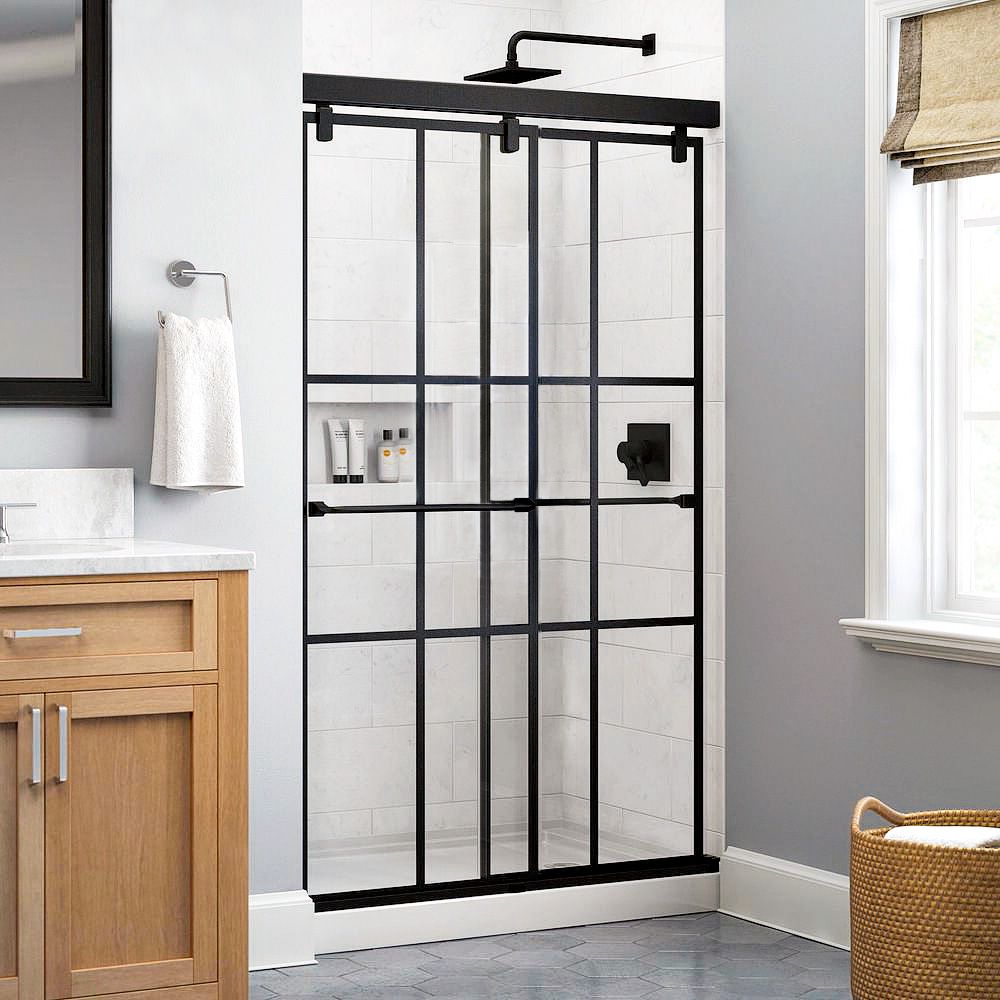
Black grid patterns give doors an industrial edge reminiscent of factory windows.
Shown: Delta Everly Frameless Mod Soft-Close Sliding Shower Door in Matte Black with Ingot Glass, The Home Depot
No Shower Door
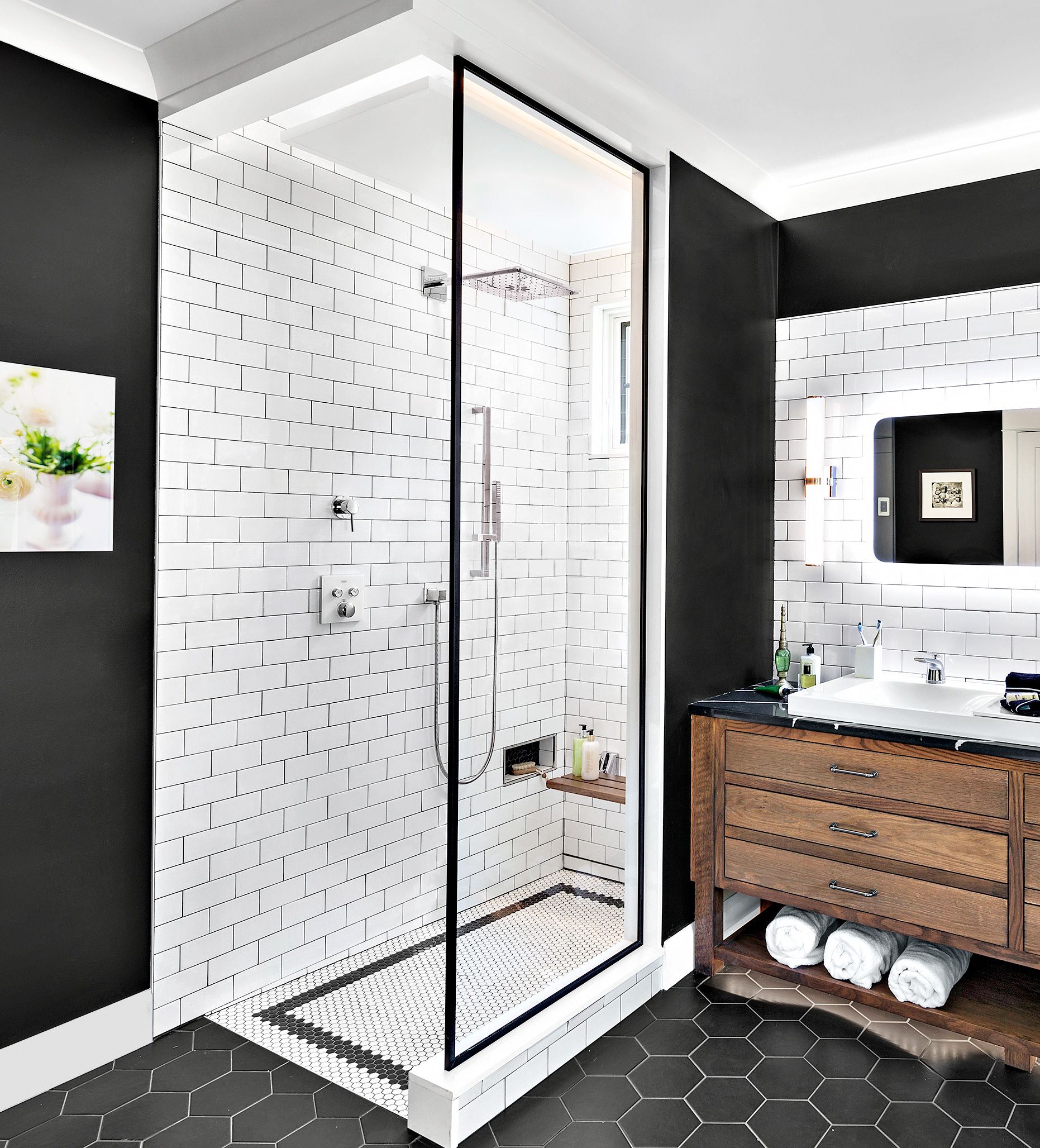
An open concept design can make a small space feel larger, with a ceiling-high glass sidewall to usher in light.
Similar to shown: Vigo Meridian Framed Fixed Glass Panel, Wayfair
Barrier-Free Shower Enclosures
Barrier-free shower enclosures offer both accessibility and a spa-like atmosphere. When considering this option, keep in mind:
- The shower floor must be flush with the bathroom floor, requiring either lowered framing under the shower pan or a raised floor outside the shower.
- Extend the waterproofing membrane at least 4 inches up adjacent walls and a foot beyond the pan’s edge.
- Position the drain as far from the shower door as possible.
- Aim the shower spray away from the door to minimize water splashing outside the enclosure.
4 Things To Know About Shower Fittings
When selecting shower fittings, consider these important factors:
1. Weight matters
Weight can help you assess the quality of shower fittings. Plumbing pro Kevin Bilo notes, “A cast-bronze or -brass valve body is going to last longer and give you fewer problems than one with lightweight parts.”
The same applies to other fittings. Painted plastic won’t weigh as much, or hold up as well, as solid brass with an electroplated or PVD (physical vapor deposition) finish.
Bilo also recommends valves with ceramic-disc cartridges, which stand up to the gritty minerals that may flow through pipes better than old-style washerless cartridges.
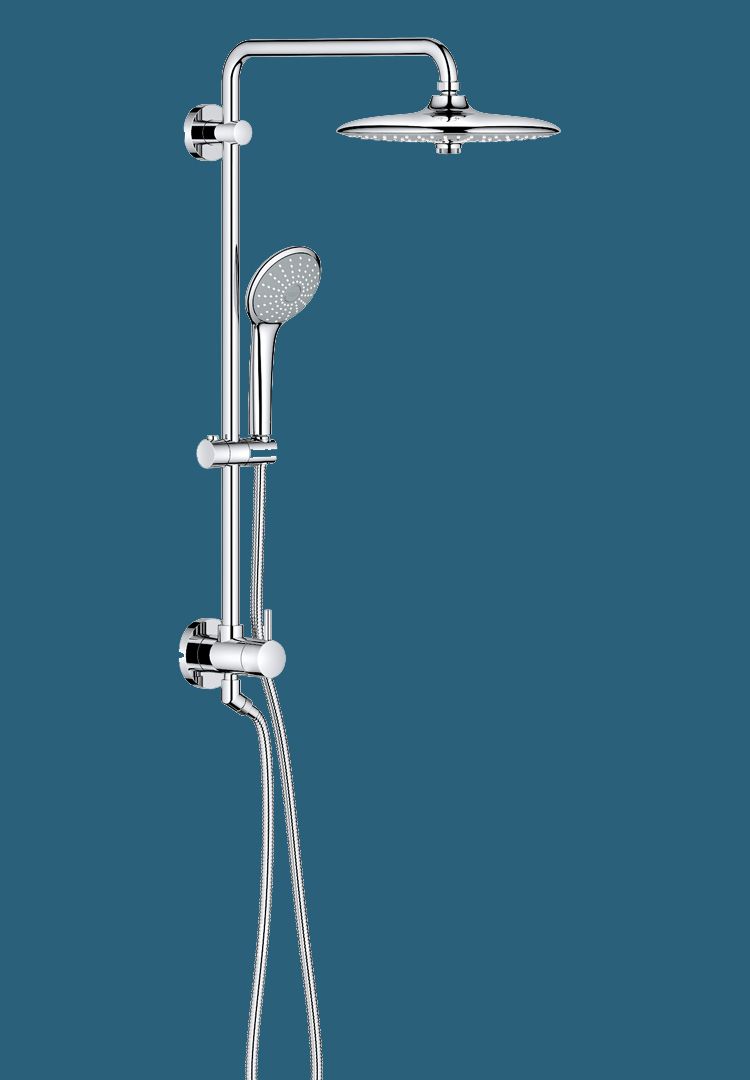
2. Suss out the showerhead
Ones that let loose two gallons of water per minute or less earn the coveted EPA WaterSense label, inspiring manufacturers to get creative in achieving maximum sense of drench.
Look for those with easy-to-clean silicone nozzles that aim for full-shoulder coverage, and spray controls that are easy to work. The best showerheads use pressure-compensating flow controls to make the spray feel fuller—like air infusion, window-wiper-style motion, crisscrossing patterns, or a spiraling spray —to trick the body into thinking it’s experiencing heavy rain.
Adjustable sprays can offer differing sensations, from soft to intense. Rain showers are designed to hit the top of your head first, but don’t assume they will deliver more water than wall-mount showerheads.
3. Benefits of a Hand Shower
Hands showers can be docked high or low, on or off the shower riser, and unhooked for a targeted spray, which is also useful when cleaning the walls. Typically, there’s a toggle between the handshower and the showerhead, though some newer systems allow simultaneous use. There are also combo fittings (like the one pictured above) that make use of an existing valve.
Shown: Retrofit System 260, $966; Grohe
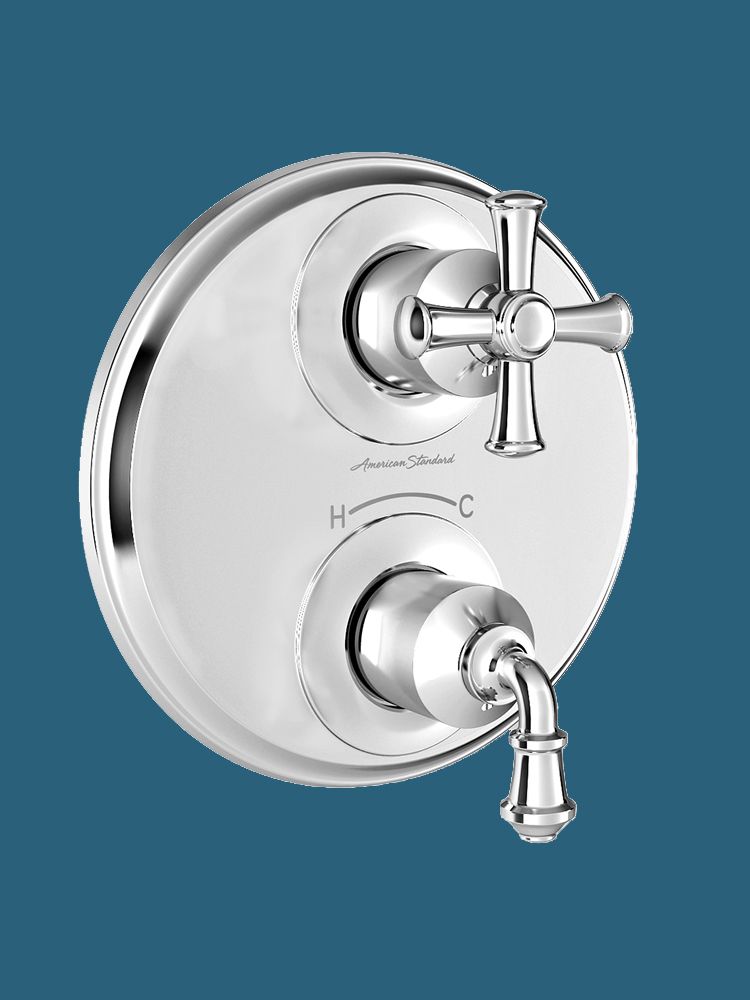
4. A thermostatic valve gives better control
Thermostatic valves adds more money to your project, but offers safety and convenience that a standard pressure-balance valve cannot. The latter will prevent scalding if a toilet flushes while you’re showering, but doesn’t offer easy or foolproof temperature setting.
With thermostatic valves, you get two controls, one for volume, the other for temperature—the second of which you can set and forget. These valves automatically and quickly adjust the water to within a degree (or less) of your desired temperature.
Shower Vents and Lighting
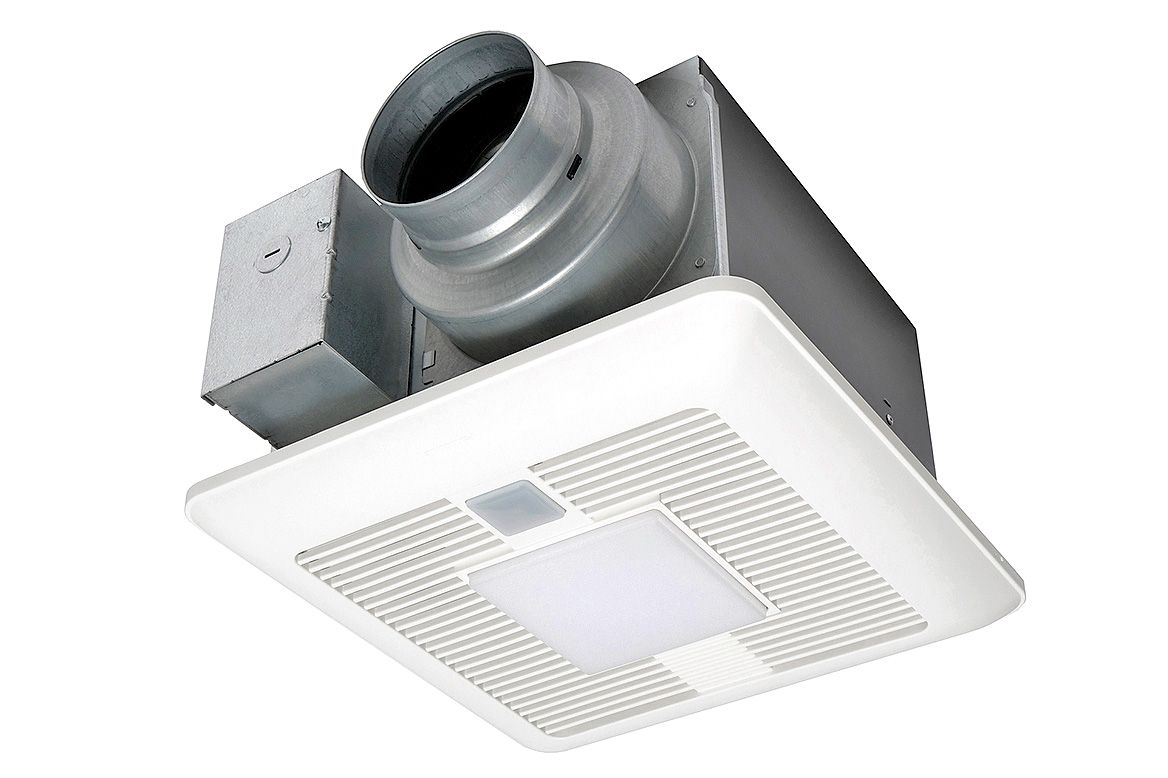
The Right Light: Plan for one or two recessed ceiling fixtures in the shower ceiling. They must be UL-rated for wet locations, with sealed gaskets to stop moisture from getting into the ceiling cavity. Master electrician Heath Eastman recommends low-profile LED fixtures, which save energy and will operate for years before flickering out. Wire them to a separate GFCI-protected switch outside the shower, and equip the switch with a dimmer for late nights and early mornings.
Vent Fan Basics: A properly sized bath vent fan—with at least one CFM of airflow per square foot of bathroom floor—will suck out moisture that can otherwise condense on ceilings, walls, and mirrors, contributing to peeling paint and mildew growth. A fan located inside a shower enclosure must be wet-rated and installed with GFCI protection.
Look for quiet operation, with a sound level of one sone or less—so quiet you might forget it’s running. To eliminate that kind of guesswork, choose an Energy Star-certified fan that will turn on automatically when it senses rising humidity, with a timer you can set to run for at least 20 minutes once the water’s shut off. Want a vent fan with a built-in light? Eastman suggests wiring a separate switch for each function.
Shown: Panasonic’s WhisperSense DC fan with LED light has built-in moisture and motion sensors. $311; The Home Depot
Benefits of a Wet-Area Room
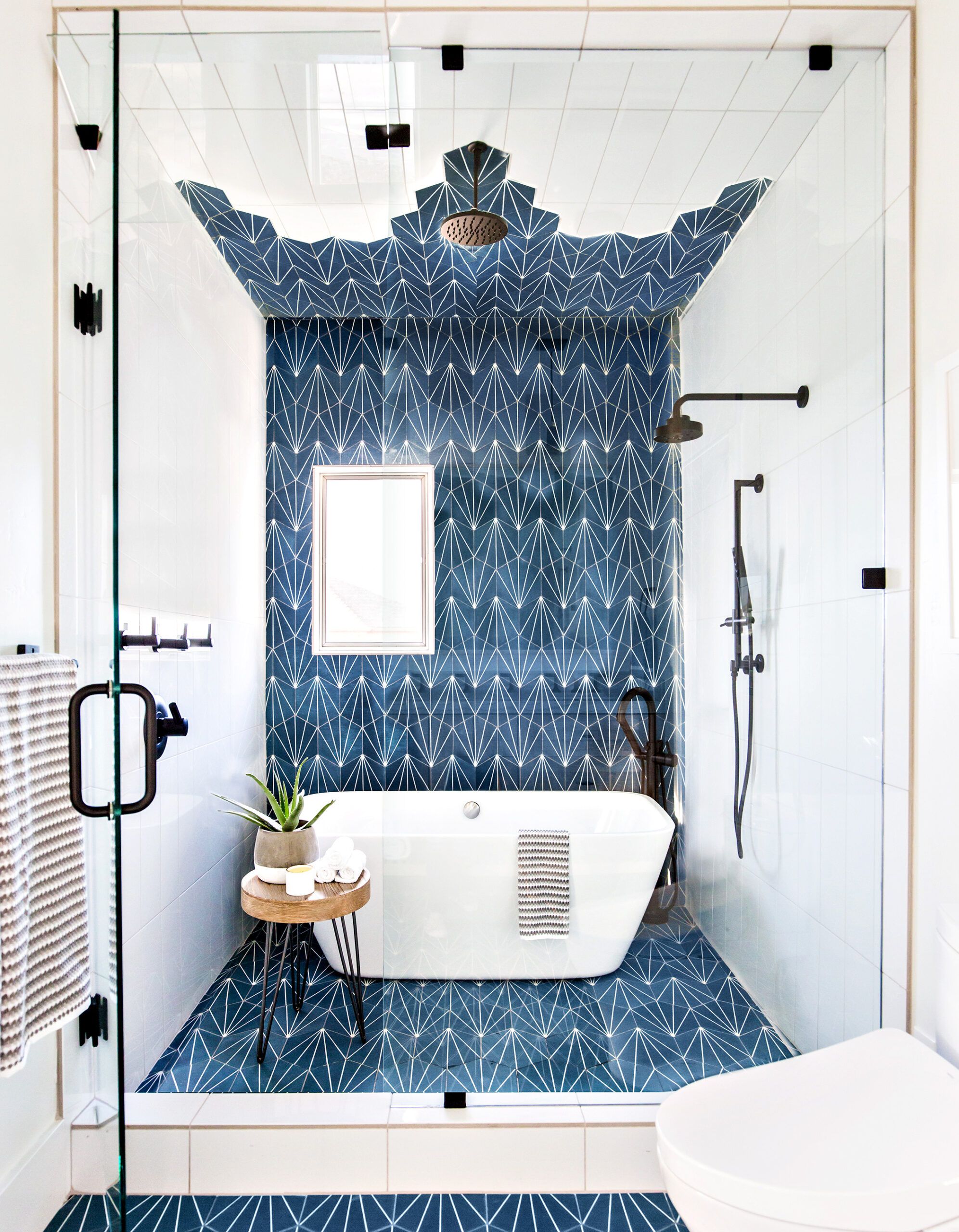
The concept of a “wet room” is gaining popularity, where the entire bathroom is waterproofed. A more practical approach for many homeowners is creating a “wet area” that combines the shower and bath behind a transparent room divider. This design requires:
- Waterproofing the entire area like a shower enclosure
- Separate drains for the tub and shower
- A vent fan coupled with a heating element can provide warmth and moisture control
- Consideration of in-floor radiant heat for faster drying of tiled floors
Shower Wall Options
Modern shower designs are trending towards large-format materials for walls, including:
- Porcelain tiles measuring 2 by 4 feet or larger
- Stone or stone-look slabs
- Engineered stone and solid surfacing materials
These options offer a seamless look and can reduce grout-related maintenance issues.
Large-format tiles often appeal due to their sleek appearance and lower maintenance. With fewer grout lines, these materials minimize mold and mildew growth, making cleaning simpler. Engineered stone and solid surfacing options also provide robust durability and resistance to moisture, ideal for wet environments like showers.
Because natural stone is heavy and may need sealing, thinly sliced engineered stone and solid surfacing are on the rise. The best new products are as durable as natural stone, more stain-resistant, and easier to install—the lighter, the better.
Slip-Proof Flooring
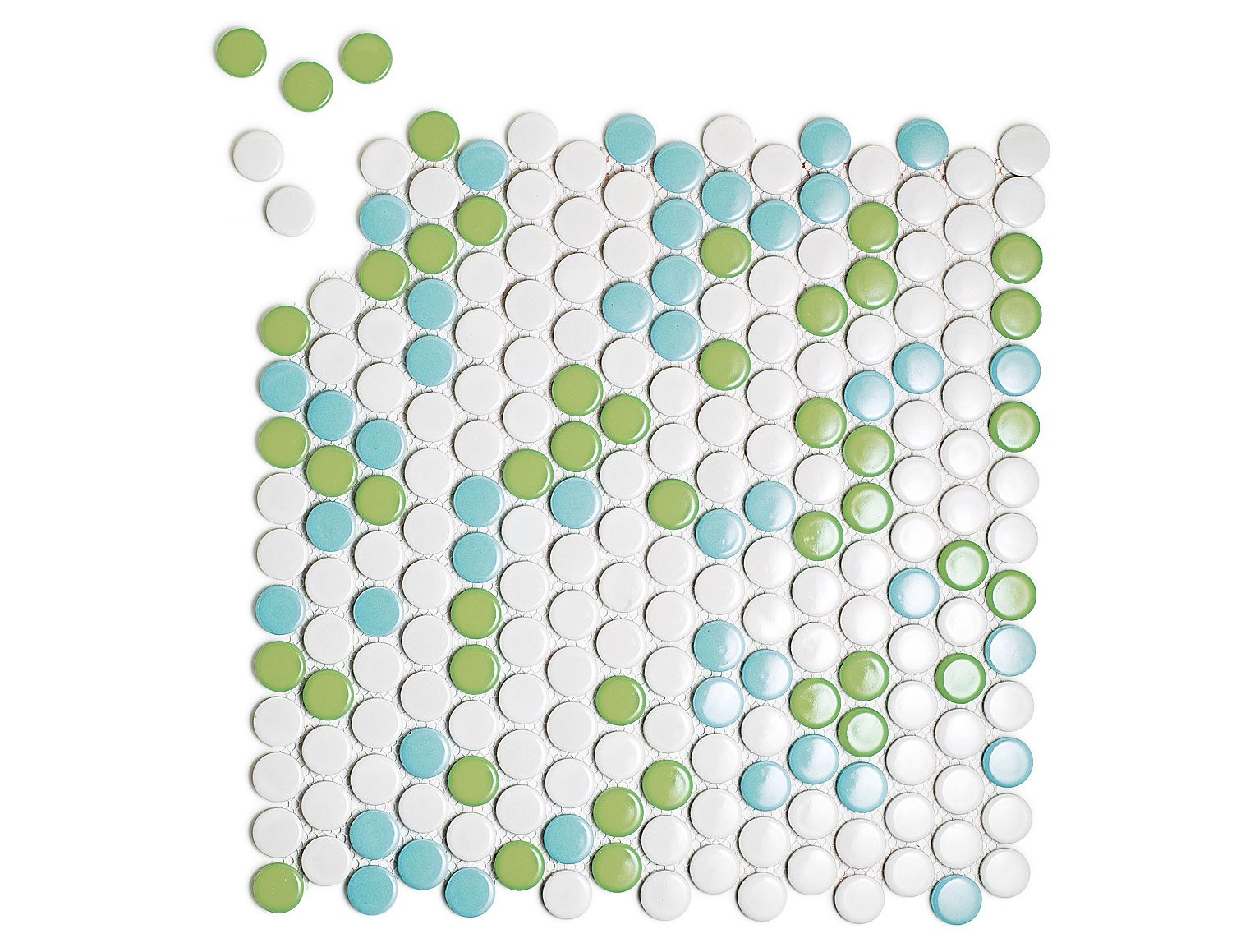
Safety is paramount in shower design. While no floor is slip-proof, you need to get it as close to that as you can. When selecting flooring, consider:
- Small tiles (1.5 to 2 inches in diameter) for increased traction due to more grout lines
- Matte-finish tiles with a sandy or textured feel
- Unglazed quarry tile or naturally rough/honed stone
- For larger tiles, look for a dynamic coefficient of friction (DCOF) rating of 0.42 or higher when wet
Window Treatments
On occasion, a window interrupts an exterior shower wall. If you don’t want to close it up and sacrifice the natural light it provides, This Old House general contractor Tom Silva recommends installing a unit made of waterproof fiberglass and treating it on the inside just as you would on the outside of the house.
Once you’ve taken the steps below, he suggests installing a shower curtain above the window and closing it when the shower is in use, both for privacy and to protect the opening from water.
- Protect the rough opening by applying a waterproofing membrane to all exposed wood framing.
- Use cellular PVC trim to cover the window’s edges.
- Caulk around the trim with a mildew-resistant sealant, except along the bottom edge; that way, any water that gets past the trim can escape.
